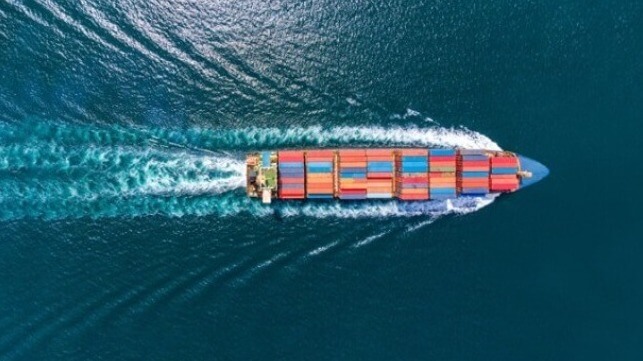DNV: Significant Costs, Supply Challenges to Achieve Decarbonization

While it is clear that the shipping industry is taking its first tentative steps toward decarbonization, DNV in the latest edition of its Maritime Forecast highlights significant hurdles and costs that lay ahead. The classification society points to the race to develop both the solutions aboard ships as well as more critically the need to develop the shoreside infrastructure and production to make sufficient quantities of fuel available to meet the industry’s needs.
DNV cites the changes in the orderbook and steps taken by the shipping companies as evidence that the fuel transition has already started. They calculate that only 5.5 percent of the global fleet in service today can operate on alternative fuels. However, they point out that a third of the vessels on order (based on gross tonnage) will be able to use alternative fuel sources. Currently, they point out that liquified natural gas (LNG) is the runaway leader with over 900 ships in service and another third of current orders or more than 500 ships due in the near term.
However, they predict that fossil fuels including fossil-based LNG will be in rapid decline by mid-century or phased out completely. They highlight the efforts to develop many options ranging from ammonia to methanol and methane as well as fuels produced from sustainable biomass such as bio-LNG, bio-MGO, and bio-methanol. They also point to a strong growth in electronification saying it could easily double in the future while also believing that lower sulfur fuels with carbon capture and storage will remain a part of the industry for years to come.
“The search for the best alternative carbon-neutral fuel options and technologies is underway as the entire world seeks to decarbonize,” said DNV Maritime CEO Knut Ørbeck-Nilssen. “Two thousand ships are expected to be ordered annually to 2030 but there is still no silver-bullet fuel solution available."
While there remain large uncertainties about the future price and availability of alternative fuels and which ones will emerge as the primary sources for the industry, DNV highlights that significant investments are required to achieve the accelerated adoption that is required for the industry to meet its goals. DNV forecasts that the investments for onboard technology will range from $8 to $28 billion per year (depending on which fuel type has the largest uptake) between 2022 and 2050. However, that is dwarfed by required investments for production and onshore infrastructure which DNV projects at between $30 and $90 billion per year to 2050. The total investment could reach $2.5 trillion says DNV and, of course, it will impact contribute to higher shipping costs.
To meet the challenges that lay ahead, Orbeck-Nilssen called for greater cooperation in the industry and fewer rivalries, and attempts at establishing blame among the different scenarios for future fuels. In the forecast, they focus on the ultimate hurdle of availability discussing the challenges among all the contenders for production, distribution, and bunkering.
“No industry can decarbonize in isolation so global industries need to make the right choices together, and sustainable energy should be directed to where it has the biggest impact on reducing GHG emissions,” said Orbeck-Nilssen. “The key challenge is the availability of fuels. The shipping industry cannot resolve this issue alone.”

that matters most
Get the latest maritime news delivered to your inbox daily.
The next few years will be critical in the industry transition. While the greatest interest continues to be ammonia and hydrogen, DNV forecasts it could be up to eight years until the onboard technologies will be available for the shipping industry. They also point to significant infrastructure and bunkering technology investments required because of the unique challenges in handling these fuels.
While much is already happening, DNV expects that the start of the IMO’s carbon intensity regulations (CII and EEXI) in 2023 will further accelerate the changes. As these rules become operational, DNV expects a significant impact on ship design and operations.
